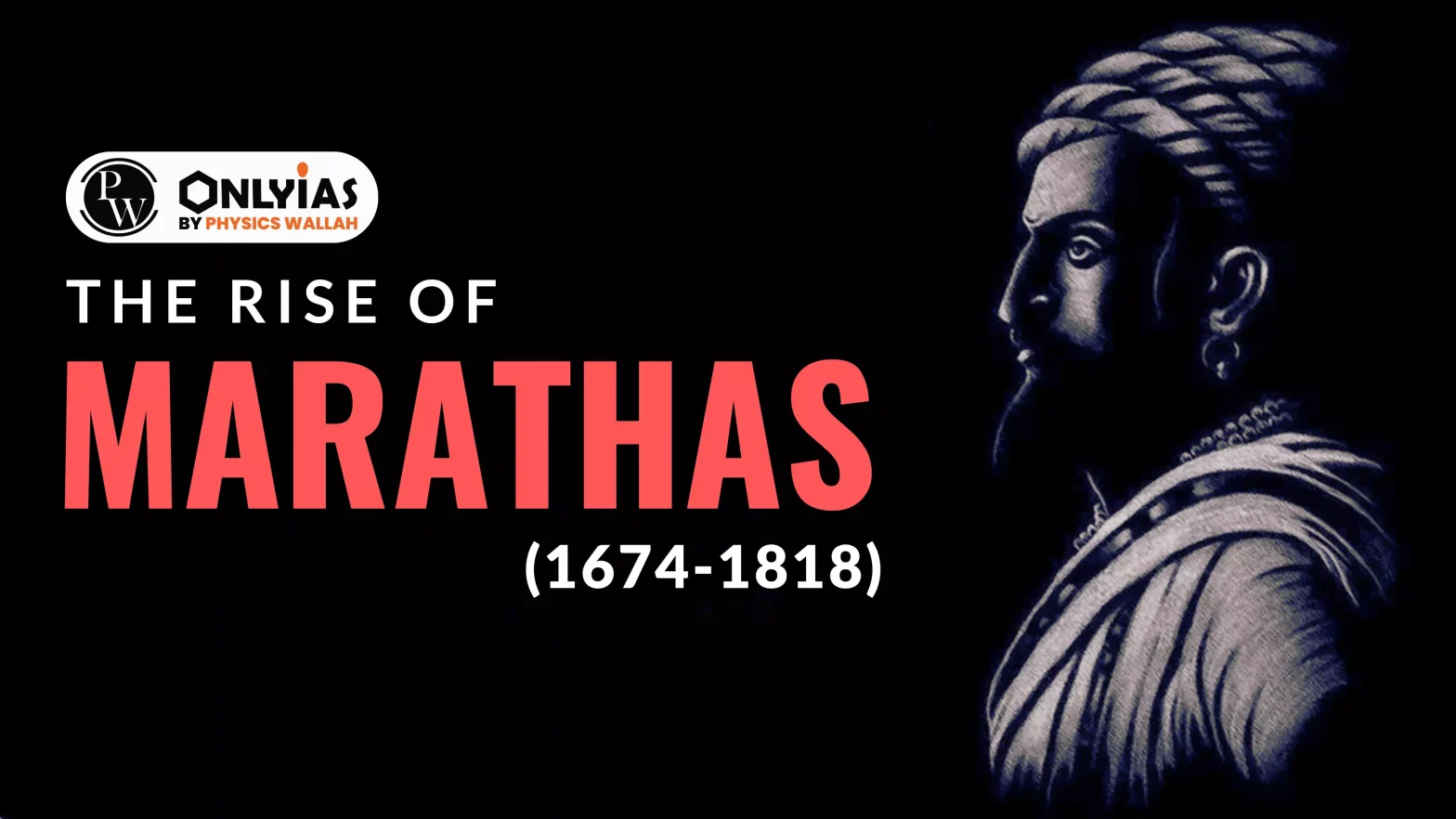Rise of the Marathas: Explore their journey from Shivaji's Hindavi Swarajya to empire expansion, administration, and downfall after the Third Battle of Panipat.

The rise of the Marathas, a warrior community hailing from the western Deccan Plateau, holds great significance in Indian history. Speaking the Marathi language, they emerged as a powerful force by establishing the concept of Hindavi Swarajya, which advocated for self-rule for Hindus. Led by Shivaji, the Marathas rebelled against the Adil Shahi dynasty and later challenged the mighty Mughal Empire. Their relentless struggles ultimately resulted in the establishment of a kingdom in the 17th century, with Raigad as its capital. This marked the remarkable rise of the Marathas and their unwavering quest for independence and sovereignty.
The Marathas rose to prominence through the establishment of Hindavi Swarajya, which sought self-rule for Hindus. Their rise was fueled by their identity as Marathi-speaking warriors from the Deccan Plateau (modern-day Maharashtra). Their rise to power was a result of a series of strategic and political developments that shaped the course of their history. Here is a comprehensive note on the rise of the Marathas:
After the death of Aurangzeb, the Marathas remained a force that needed to be subdued by the Mughals. However, the Maratha Empire faced internal conflicts that further weakened its position. One of the major conflicts arose between Shahu, the ruler of Satara, and his aunt Tara Bai, who controlled Kolhapur. This power struggle had been ongoing since 1700, fought under the pretext of Tara Bai’s son Shivaji II.
|
Peshwa Bajirao 1 (1700-1740) |
|
The Maratha State replaced Persian with Marathi as the official language and recruited Hindus to top positions. They developed their own statecraft dictionary and had three areas of study: central administration, revenue administration, and military administration.
The Fall of the Marathas signalled the end of an era and the emergence of British colonial dominance in India, signalling the decline of a once-powerful empire.
|
#PW-OnlyIAS Edge |
|
Causes for Maratha’s defeat in the Third Battle of Panipat (1761)
|
The rise of the Marathas in the 17th century, led by Shivaji and his supporters, marked a significant shift in Indian history. Under Shivaji’s leadership, the Marathas established a strong and independent state that challenged the authority of the Mughal Empire. Shivaji’s vision, military prowess, and administrative skills were instrumental in the Marathas’ success. Their rise reshaped the political landscape of early modern India and left a lasting impact on its history. The Marathas’ rise stands as a compelling chapter in Indian history, highlighting the power of their empire, the Maratha Confederacy.

<div class="new-fform">
</div>
